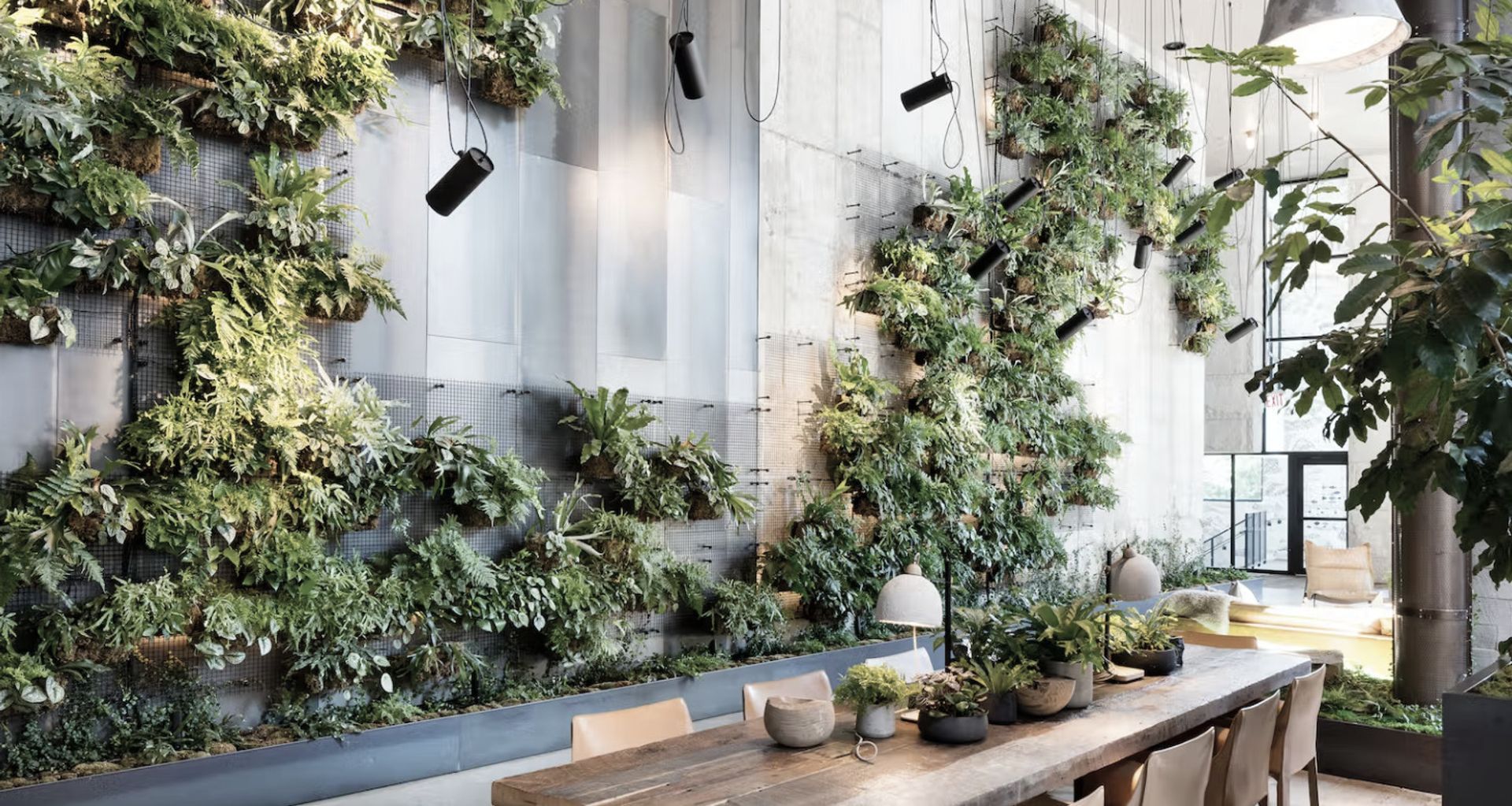Biophilic design and the Architecture of wellbeing

Biophilic design is founded on the belief that humans have a natural need to interact with nature and other forms of life. Studies have shown that exposure to nature can help reduce stress levels, improve moods, and boost cognitive function.
It is possible to create environments that are not only visually beautiful and elegant, but also encourage well-being and a sense of calm by blending aspects of nature into the built environment.
It can be done by adding plants and greenery into the room, utilising natural materials such as wood and stone, and offering views of nature or landscaped areas. Architects also often incorporate features that mimic the properties of natural light, such as skylights and windows, to create spaces that feel more open and airier.
When incorporating biophilic principles into a project, it is important to consider the needs of the occupants and the specific site conditions.
For example, a school might focus on using nature to create a stimulating and enriching learning environment for students. An office space may prioritise views towards natural landmarks and make good use of natural light and ventilation. At home you can turn your residence into a haven that promotes relaxation and rejuvenation.
When done right, biophilic design can offer a multitude of benefits – for both people and the planet. Using natural materials and incorporating features that promote energy efficiency can help reduce the negative environmental impact of buildings. As Australia is home to a diverse range of natural environments, it is important to choose the right materials and features that will work well in the local climate.
Finally, it is important to consider the budget and time frame of the project. Biophilic design can be achieved on a variety of budgets and timelines, from affordable housing to luxury developments, so it is important to find an approach that is achievable within the constraints of the project. If you take the time to consider these factors, you can create a biophilic design that is both beautiful and sustainable.
As awareness of the benefits of biophilic design grows, it is likely that we will see more demand for this type of architecture in the future.
